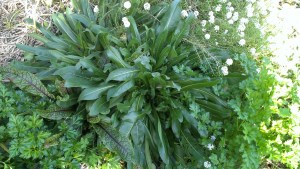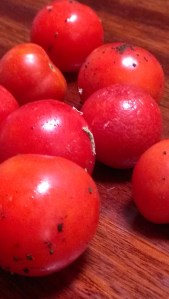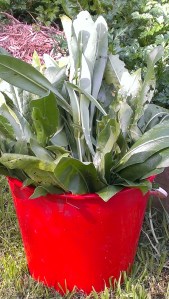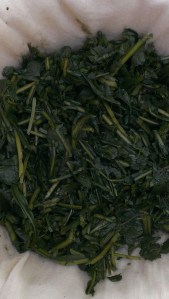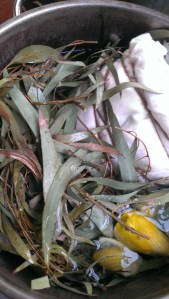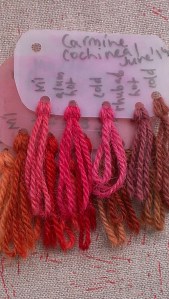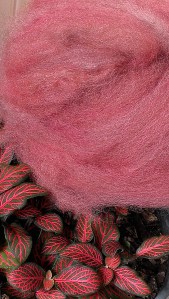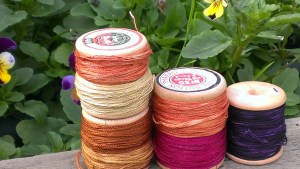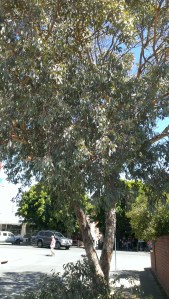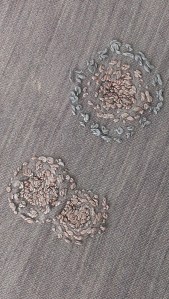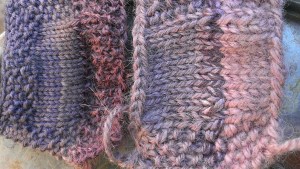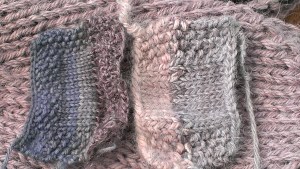When I found I could get safflower seed… it was just too good to resist. So I grew safflowers.

Does this look thistle-y to you? Yes! They are spiny and they are a form of thistle. On the upside, they were more than up for the conditions of a South Australian summer garden.
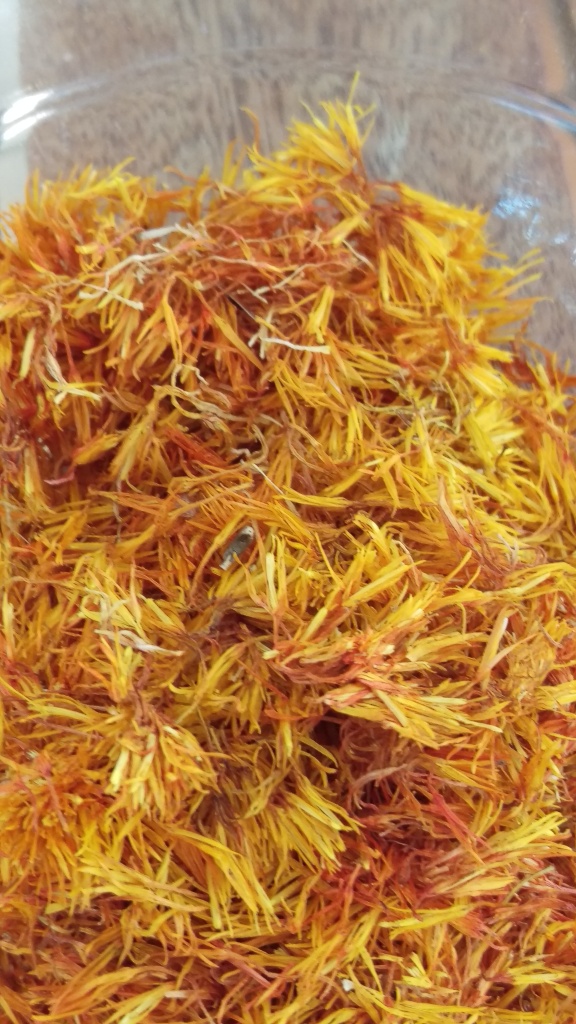
Downside… the entire harvest of petals, yes, petals! was 3 g. After quite a lot of petal pulling… However, upside… ravening brushtail possums patrol our vegetable garden these days and they were not at all interested in the safflowers. Three cheers!

I experienced some confusion in my attempts to find instructions on how to extract dye from this plant. It famously gives more than one colour when you treat it right, but one book referred to flower heads while others referred to petals (I tried flower heads and gave up). Others explained the principle behind dye extraction but, I have never done this before and wanted something a little more like a recipe. In the end, I followed the Maiwa instructions, for which I am grateful!
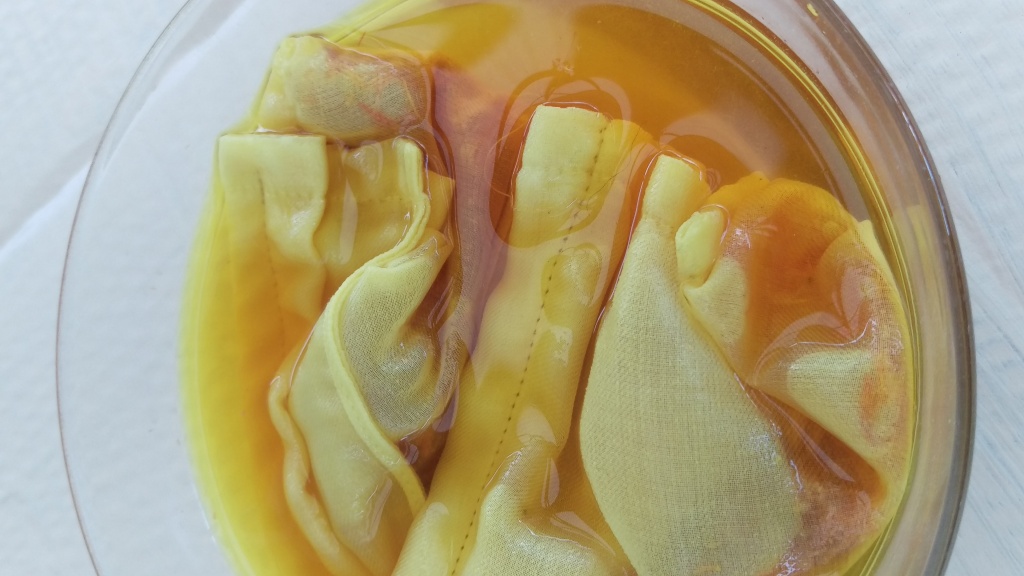
I stitched the petals into a bag made from a double layer of cotton voile (leftover from handkerchief making, no less!). There was so much yellow dye in stage 1!

Changes came about as I soaked and re-soaked my precious petals.

Finally, the dye bath! Some magic with Ph, and then… In goes my cotton thread, which immediately takes on a pink tinge.

Until eventually I have both yellow-dyed silk thread and pink dyed cotton thread.

And, of course, seeds and seed heads.

But for a sumptuous film about how this could be done by far more skilled hands and heads (and with fields of safflowers to begin with)… watch this!

